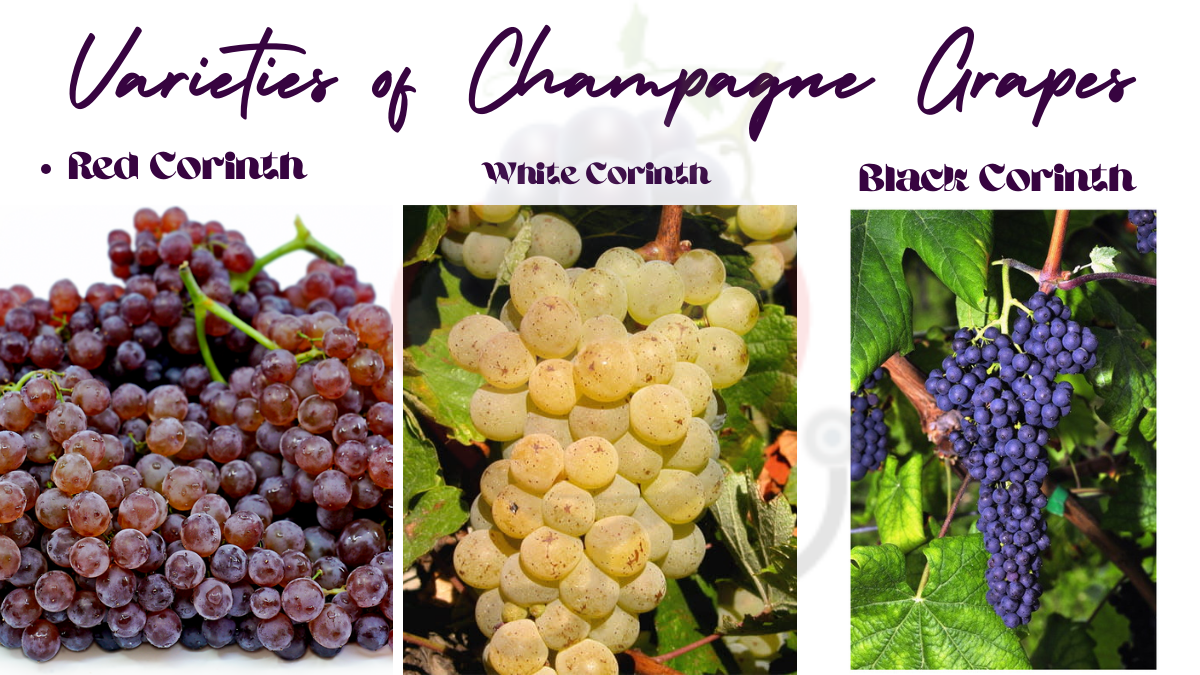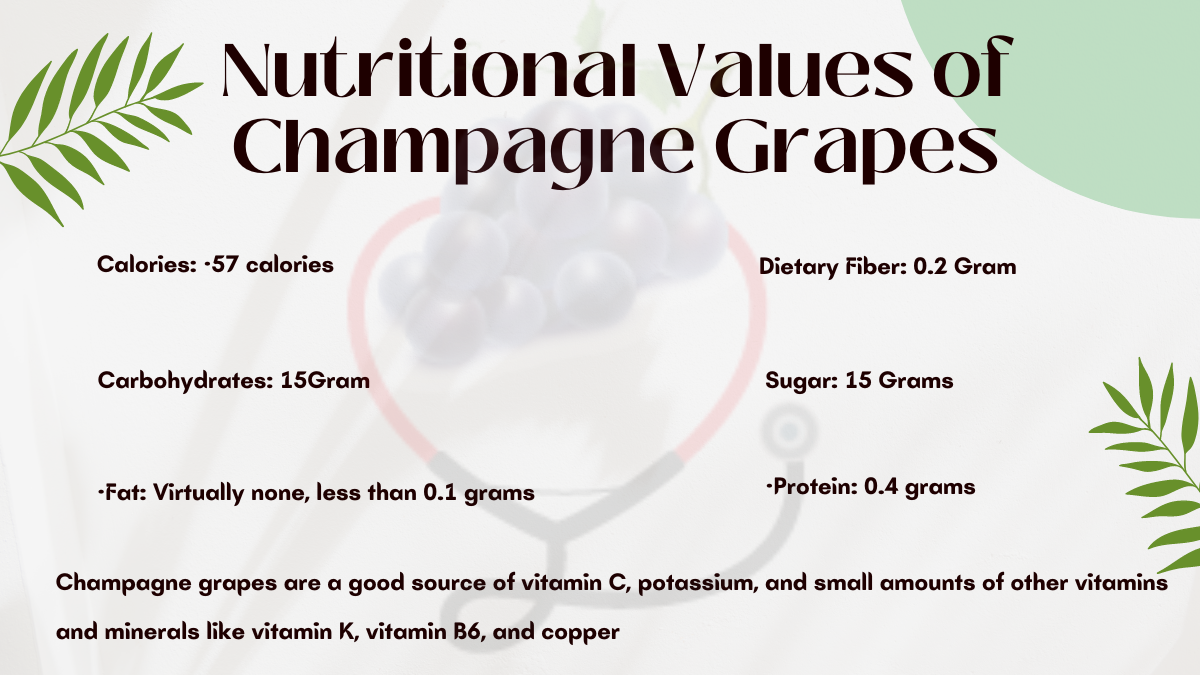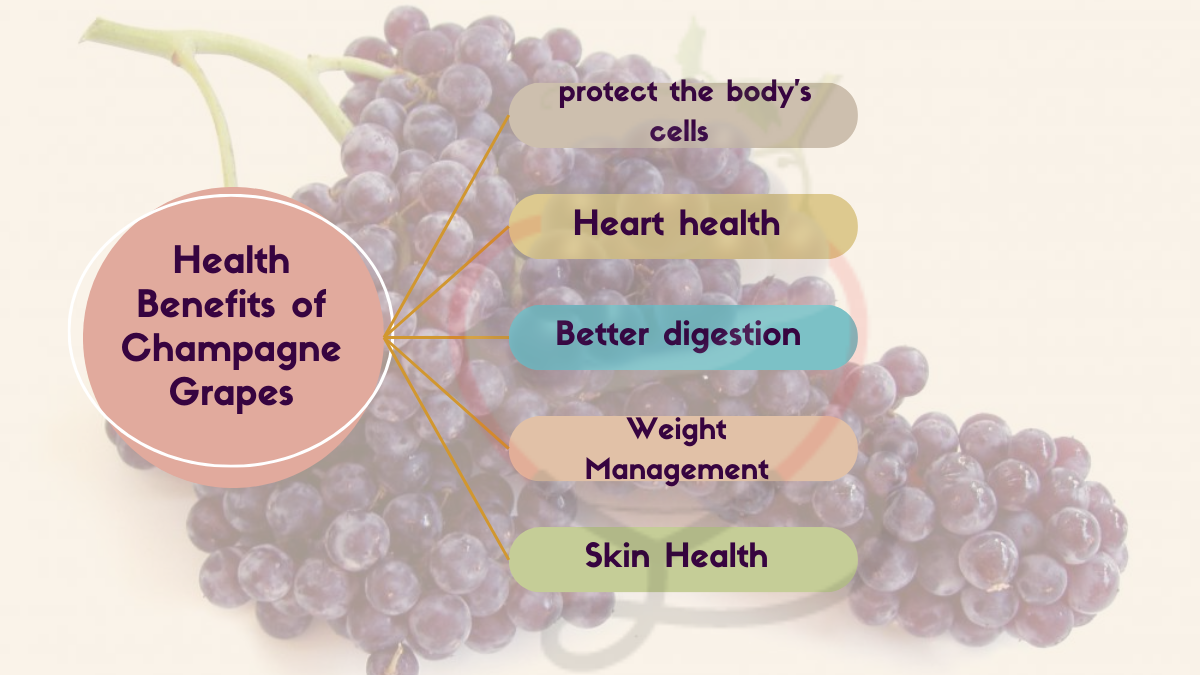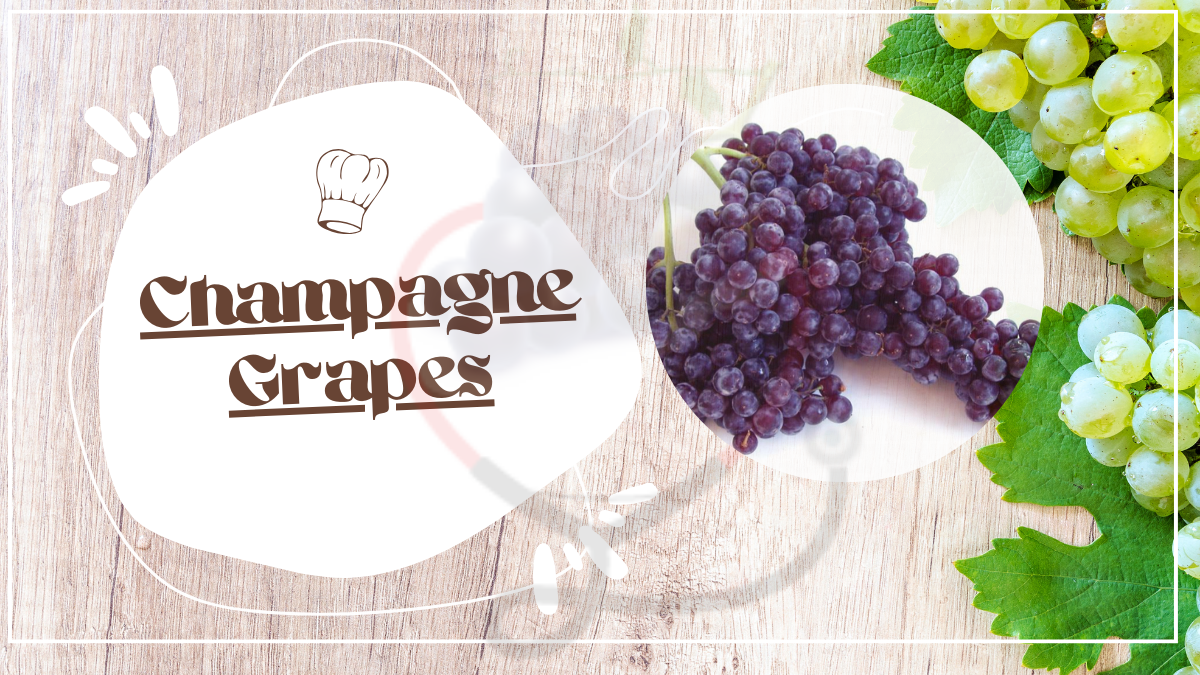Champagne grapes, also known as Black Corinth grapes, are a variety of Vitis vinifera, the grape species used in winemaking. [1]
These grapes are among the smallest grape varieties, resembling tiny pearls in clusters. Their small size and sweet, seedless flesh make them a delightful addition to various dishes and desserts.
Champagne grapes are small, sweet, and sparkling. While most people associate the term “champagne” with the luxurious bubbly beverage, these grapes hold a unique place in the world of viticulture.

In this article, we’ll explore the fascinating world of champagne grapes, from their origins to their culinary and health benefits.
Varieties of Champagne Grapes
Champagne grapes come in several varieties, with the Black Corinth being the most well-known.
Other varieties include Red Corinth and White Corinth grapes. Each variety has its unique flavor profile, with Black Corinth grapes being the most popular choice for consumption and winemaking.

Origin of Champagne Grapes
The history of Champagne grapes dates back to ancient Greece, where they were cultivated in the region of Corinth.
They gained popularity in the Roman Empire and were even mentioned in historical texts. The term “champagne” likely originated from the Latin word “Vinum cereum,” meaning “raisin wine,” highlighting their historical use in winemaking.
Growing Conditions and Regions
Champagne grapes thrive in Mediterranean climates, characterized by mild winters and warm, dry summers.
They are primarily grown in countries such as Greece, Italy, and the United States, with California being a prominent region for their cultivation.
Harvesting Champagne Grapes
Harvesting champagne grapes is a delicate process, as their small size and thin skins make them susceptible to damage.
Typically, they are harvested by hand to ensure the grapes remain intact. This labor-intensive method ensures the grapes’ quality and flavor.
Culinary Uses of Champagne Grapes
Champagne grapes are versatile in the kitchen. They are often used in baking, especially in fruitcakes and desserts like tarts and scones.
Additionally, they make delightful additions to cheese platters, adding a burst of sweetness to complement savory flavors.
Nutritional Values of Champagne Grapes

- Calories 57 calories
- Carbohydrates 15 grams
- Sugars 15 grams
- Fiber around 0.2 grams
- Protein 0.4 grams
- Fat Virtually none, less than 0.1 grams
- Vitamins and Minerals Champagne grapes are a good source of vitamin C, potassium, and small amounts of other vitamins and minerals like vitamin K, vitamin B6, and copper.
Health Benefits of Champagne Grapes
Champagne grapes, also known as Black Corinth grapes, offer several potential health benefits due to their nutrient content and antioxidant properties.
Here is some of the health benefits associated with Champagne grapes.

1: Antioxidant Rich
Champagne grapes are packed with antioxidants, including vitamins C and K, as well as various phytonutrients like anthocyanins. [2]
Antioxidants help protect the body’s cells from damage caused by free radicals, which can contribute to chronic diseases and aging.
2: Heart Health
The antioxidants and potassium in Champagne grapes may support heart health. [3]
Potassium helps regulate blood pressure, and the antioxidants can help reduce the risk of heart disease by preventing oxidative stress and inflammation.
3: Digestive Health
The fiber [4] content in Champagne grapes, although relatively low, still contribute to better digestion by promoting regular bowel movements and preventing constipation.
4: Weight Management
Champagne grapes are a low-calorie and low-fat snack option. [5]
Including them in your diet can help with weight management because they are satisfying without adding excessive calories.
5: Skin Health
The vitamin C in Champagne grapes is essential for collagen production, which is vital for healthy skin. [6]
It can help improve skin texture and promote a youthful appearance.
6: Bone Health
Vitamin K, [7] found in Champagne grapes, plays a crucial role in bone health.
It helps with calcium absorption and bone mineralization, potentially reducing the risk of osteoporosis.
7: Immune Support
The vitamin C content in Champagne grapes can boost the immune system, helping the body fend off infections and illnesses. [8]
8: Anticancer Properties
Some studies suggest [9] that the antioxidants in grapes, including Champagne grapes, may have anticancer properties by reducing oxidative stress and inflammation.
9: Eye Health
The antioxidants lutein and zeaxanthin, found in grapes, are beneficial for eye health. [10] They may help protect against age-related macular degeneration and cataracts.
Champagne grapes, with their small size and sweet, sparkling qualities, add a touch of elegance to both culinary creations and winemaking.
Their rich history and versatility make them a beloved ingredient in kitchens worldwide.
So, whether you’re savoring them in a decadent dessert or raising a toast with a glass of champagne, remember the unique charm of champagne grapes.
FAQs about Champagne Grapes
Can I grow champagne grapes in my backyard?
Yes, you can grow champagne grapes in your backyard if you have the right climate and growing conditions.
Are champagne grapes used only for making wine?
No, champagne grapes are also used in baking and as a delicious addition to cheese platters.
Are there any unique recipes featuring champagne grapes?
Yes, you can find various recipes online that showcase champagne grapes in creative ways.
Are champagne grapes and regular grapes the same?
No, champagne grapes are a distinct variety known for their small size and unique flavor.
Are there any specific health concerns related to consuming champagne grapes?
Champagne grapes are generally safe to eat, but as with any food, moderation is key.

